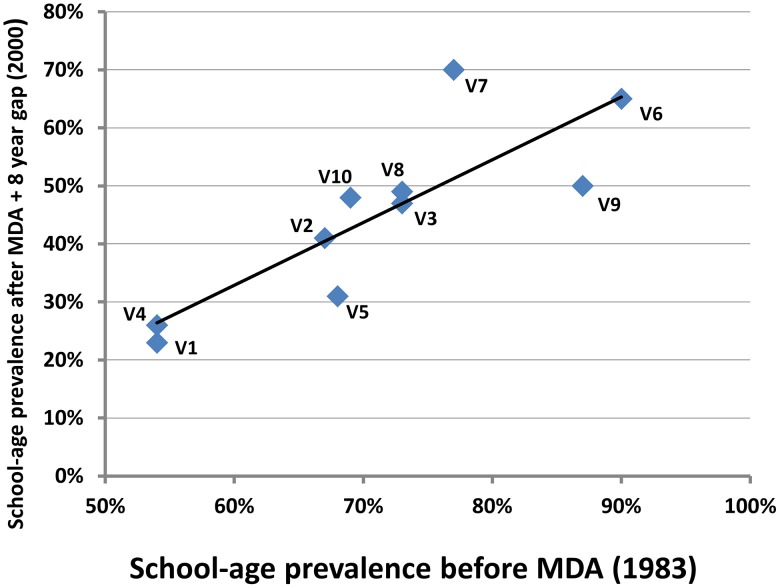Figure 2. High correlation between pre- and post-treatment prevalence of Schistosoma infection at the local village-level.
Village-level S. haematobium prevalence values for school-age children are plotted for 10 neighboring communities included in the Msambweni Study in coastal Kenya [24], [25], [29]. Pretreatment prevalence values from Fall 1983 are indicated on the x-axis, while post-treatment values for 2000 are indicated on the y-axis. During the 1983–2000 interval, the participating communities received school-based targeted drug administration from 1984–1992, after which a funding lapse led to suspension of treatment. The 2000 values thus indicate a robust return of infection prevalence after an 8 year hiatus of control. Pearson correlation (R = 0.83, P<0.001) indicated a strong association between pre- and post-control village-level prevalence values. Corresponding linear regression (y = 1.08x−0.32) indicated that the post control prevalence was, on average, 32 percentage points lower than before control. Nevertheless, all villages relapsed to the moderate or high S. haematobium prevalence categories, with pre-control prevalence an excellent predictor of the level of post-treatment rebound. These and post-treatment data from additional yearly surveys were used to calibrate the SWB model used in this study.

